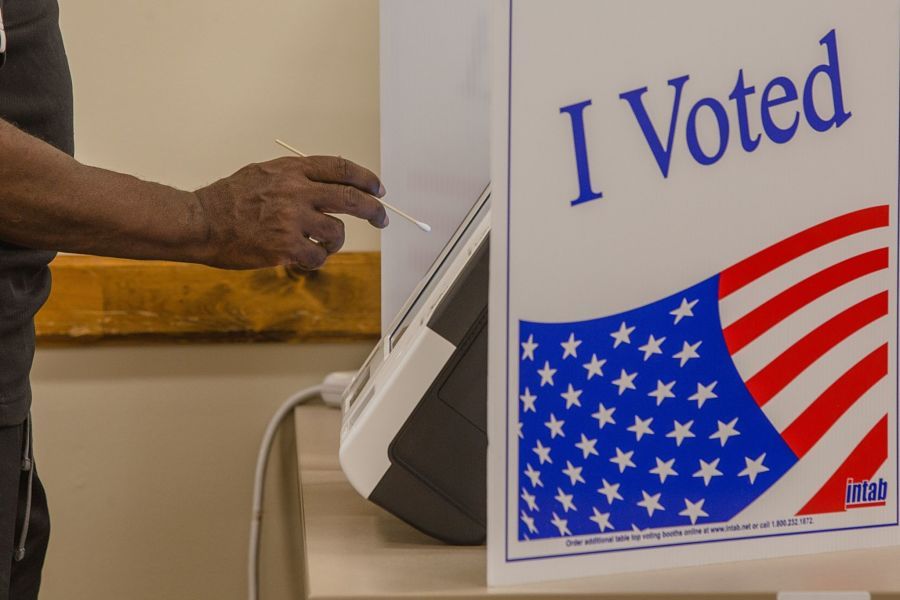PROXY VOTING
When you buy Tesla stock, you become an investor in Tesla and have certain investor rights. You can show up to the annual shareholder meeting and vote if you’d like to, or request access to certain documents, maybe even propose a resolution. However, when you buy Tesla stock through an index fund, most of your investor rights are stripped away and given to someone else. You no longer have voting rights at Tesla or Amazon or Apple, or any company your money is invested in through those index funds. Your voting rights are now owned by the mutual fund companies that offer the index fund you purchased.
CENTRALIZATION OF POWER
This centralization of proxy power is a big problem because the index fund industry is dominated by five companies that collectively own 90% of index fund assets. As the new, digital Wall Street takes shape, the macro shift into index funds appears unstoppable. The trillions of dollars flowing into index funds has concentrated shareholder power into a very small elite group. At some point in the near future, a tipping point could be reached where these giant index fund companies will hold voting control over virtually every large U.S. corporation. This would represent a historic shift in corporate power in America at a time when giant tech companies influence our day-to-day lives in unprecedented ways.
WORLD DOMINATION?
According to a Bloomberg study last year, 22% of the shares of the typical S&P 500 company sit in the portfolios of the Big Three: BlackRock, State Street and Vanguard. This is a massive voting bloc, especially when you factor in that many shareholders don’t ever take the time to vote. What happens when this voting block reaches 40% or 50%? Effective control of corporate America.
Having such a high concentration of power in the hands of just a few giant institutions would “not serve the national interest,” Bogle, the father of index funds, wrote in his final op-ed in the Wall Street Journal in 2018.
PROPOSED SOLUTIONS
Although many solutions have been postulated, most seem to create new problems. Does the industry really want the government to step in to regulate these votes? Would independent voting boards truly be independent? Should these giant institutions be broken up for antitrust reasons? How about stripping away the voting rights for index funds altogether (potentially placing more control in the hands of short-term stock traders, or “renters” as Bogle would call them)? Index fund shareholders traditionally buy markets and hold them for long periods of time, making them a very important part of the industry.
But the elephant in the room — why not just let the individual investors vote? — seems to be left out of each of these proposals.
DECENTRALIZE PROXY POWER BACK TO INVESTORS
The solution may be easier than anyone thought. Since index fund companies are tasked by the 1940 Securities Act to vote these shares “in the best interests of the shareholders,” why not just ask the shareholders how they want them to vote? Who better to know the best interest of the shareholder than the shareholders themselves?
Technology has certainly advanced to the point where this is now possible. One such method would be index proxy polling. An index fund company would open the proxy process up to investors by allowing its shareholders to “vote” on its website. This way, the portfolio managers would be able to tally their shareholder votes and weigh them along with the recommendations of the management of the underlying companies, before casting the final proxy vote.
WHY IT MATTERS
According to Broadridge, 28% to 29% of U.S. retail investors voted each of the past five calendar years. Since $10 trillion is currently invested in index funds, it’s possible that almost $3 trillion of index fund investors want to vote their shares but can’t. This is a significant market.
CONCLUSION
The popularity of ESG investing has placed the proxy issue squarely into the limelight. Shareholder proposals are popping up at almost every annual meeting now. The traditionally boring proxy “market” is fast becoming interesting. Further, as index fund companies begin to open the proxy process back up to their investors, these index funds will be rewarded by the investors who care, giving the companies an incentive to start allocating new resources for making the proxy process a seamless part of index fund investing. Many index fund investors may not want to vote but may shift to “open proxy” index funds to help decentralize the proxy power back to investors who do. The best index fund companies will innovate ways to make the proxy process interesting for their shareholders, even fun.
The bottom line? It’s the investors’ money. It should be their vote. Power in the hands of the many is always better than power in the hands of the few. The technology now exists to completely decentralize proxy power back to index fund investors.
Michael Willis is lead portfolio manager for Index and founder of Index Funds.








